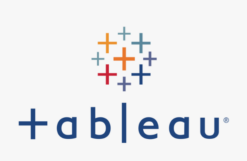Duration: 3 days – 21 hrs
Overview
The Automation with Ansible Training course is designed to provide participants with a comprehensive understanding of Ansible and its capabilities for automating IT infrastructure tasks. This course covers the fundamental concepts, architecture, and practical implementation of Ansible to automate repetitive tasks, streamline operations, and improve efficiency in an IT environment. Participants will learn how to write Ansible playbooks, manage inventory, and execute automation tasks across multiple systems.
Objectives
- By the end of this training, participants will have a solid understanding of Ansible and the skills necessary to automate a variety of IT tasks. They will be able to develop Ansible playbooks, manage inventory efficiently, and deploy automation solutions that can be applied to real-world use cases, including application deployment, configuration management, and cloud infrastructure automation.
Audience
- IT professionals responsible for managing infrastructure and systems
- System administrators and operations personnel
- DevOps engineers and automation enthusiasts
- Anyone interested in learning about Ansible and its application in automating IT tasks
Pre- requisites
- Familiarity with Linux/Unix systems and command-line interface
- Basic understanding of IT infrastructure concepts (e.g., servers, networks)
- Some exposure to scripting or programming languages (e.g., Python, Bash) is helpful but not mandatory.
Course Content
Day 1: Introduction to Ansible
Introduction to Automation
- Understanding the need for automation
- Benefits and challenges of automation
- Introduction to Ansible as an automation tool
- Ansible Architecture and Components
Ansible control node and managed nodes
- Ansible inventory
- Ansible modules
- Ansible playbooks
Setting up Ansible Environment
- Installing Ansible
- Configuration files and directories
- Ansible command-line interface
Ansible Inventory Management
- Defining inventory hosts and groups
- Dynamic inventory
- Inventory variables and patterns
Ad-Hoc Commands
- Executing ad-hoc commands with Ansible
- Managing systems using ad-hoc commands
- Ad-hoc command options and modules
Day 2: Ansible Playbooks and Tasks
Ansible Playbooks
- Structure and syntax of playbooks
- Variables and facts in playbooks
- Task execution order and control flow
- Handlers and notifications
Writing Ansible Tasks
- Using modules in tasks
- Task parameters and arguments
- Task conditions and loops
- Managing files, packages, and services with tasks
Ansible Roles
- Introduction to roles and their benefits
- Role directory structure and main tasks
- Using variables and templates in roles
- Role dependencies and inclusion
Managing Playbook Variables
- Variable precedence and scope
- Defining variables in inventory, playbooks, and roles
- Variable data types and transformations
- Variable usage in templates and conditionals
Ansible Vault
- Encrypting sensitive data with Ansible Vault
- Managing encrypted files and variables
- Vault usage in playbooks and roles
Day 3: Ansible Automation and Best Practices
Ansible Modules and Plugins
- Extending Ansible functionality with custom modules
- Using callback plugins for customized output
- Exploring community-supported modules and plugins
Ansible Galaxy
- Introduction to Ansible Galaxy
- Searching and installing roles from Galaxy
- Sharing and contributing roles to Galaxy
Ansible Tower (Optional)
- Overview of Ansible Tower features and benefits
- Setting up and configuring Ansible Tower
- Creating and managing job templates
- Role-based access control (RBAC) in Tower
Ansible Best Practices
- Structuring playbooks and roles for reusability
- Error handling and exception handling in playbooks
- Testing and validating Ansible automation
- Performance optimization techniques
Real-world Use Cases and Examples
- Deploying applications with Ansible
- Managing configuration drift with Ansible
- Continuous integration and deployment with Ansible
- Automating cloud infrastructure using Ansible








